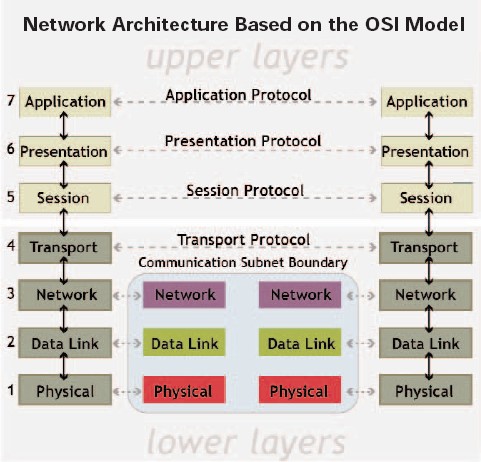|

|
| Each layer uses the layer immediately below it and provides a service to the layer above. In some implementations a layer may itself be composed of sub-layers. Each level “talks to” the equivalent level on the other node. Transmission errors call for retransmission of affected packet or packets. |

|